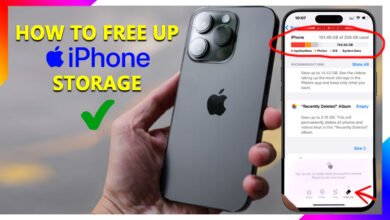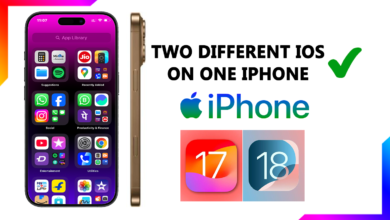iPhone Battery Myths Busted – What Actually Affects Battery Health

Let’s face it: iPhone battery health is a hot topic. We’ve all heard the rumors, tips, and tricks about how to extend battery life and keep your iPhone running like new. But how much of it is true? From leaving your phone plugged in overnight to only using Apple-certified chargers, there’s a lot of misinformation out there. In this blog post, we’ll bust the most common iPhone battery myths and uncover what actually affects your battery health. Let’s separate fact from fiction and help you get the most out of your iPhone battery.
Myth 1: Leaving Your iPhone Plugged In Overnight Ruins the Battery
The Myth: Charging your iPhone overnight overcharges the battery, reducing its lifespan.
The Truth: Modern iPhones are designed with smart charging technology that prevents overcharging. Once your iPhone reaches 100%, it stops charging and switches to power from the outlet. However, keeping your phone at 100% for extended periods can cause slight stress to the battery. To mitigate this, enable Optimized Battery Charging (Settings > Battery > Battery Health) to slow down charging past 80% overnight.
Myth 2: You Should Only Use Apple-Certified Chargers
The Myth: Using third-party chargers will damage your iPhone’s battery.
The Truth: While Apple recommends using certified chargers, many high-quality third-party chargers are perfectly safe. The key is to avoid cheap, uncertified chargers that may deliver inconsistent power or lack safety features. Look for chargers with MFi (Made for iPhone) certification to ensure compatibility and safety.
Myth 3: Closing Background Apps Saves Battery Life
The Myth: Manually closing apps in the app switcher saves battery.
The Truth: iOS is designed to manage background apps efficiently. Force-closing apps can actually use more battery because reopening them requires more power than leaving them suspended. Unless an app is malfunctioning, there’s no need to close it manually.

Myth 4: You Should Always Drain Your Battery to 0% Before Charging
The Myth: Letting your iPhone battery die completely before charging it improves battery health.
The Truth: This was true for older nickel-based batteries but not for modern lithium-ion batteries. In fact, letting your iPhone battery drain to 0% regularly can stress the battery. Instead, aim to keep your battery between 20% and 80% for optimal health.

Myth 5: Turning Off Your iPhone Regularly Extends Battery Life
The Myth: Shutting down your iPhone daily helps preserve battery health.
The Truth: While turning off your iPhone occasionally can help reset the system, doing it daily isn’t necessary and won’t significantly impact battery health. Modern iPhones are designed to handle continuous use, and frequent shutdowns can actually disrupt background processes that optimize performance.
Myth 6: Wireless Charging Damages the Battery
The Myth: Wireless charging generates excess heat, which harms the battery.
The Truth: Wireless charging does produce some heat, but modern iPhones and wireless chargers are designed to manage heat effectively. As long as you use a high-quality wireless charger and avoid charging in hot environments, wireless charging is safe and convenient.
Myth 7: Dark Mode Saves a Lot of Battery
The Myth: Enabling Dark Mode significantly extends battery life.
The Truth: Dark Mode can save battery life, but only on iPhones with OLED displays (iPhone X and later). On these devices, black pixels are turned off, reducing power consumption. However, the savings are modest—don’t expect Dark Mode to double your battery life.

What Actually Affects iPhone Battery Health?
Now that we’ve busted the myths, let’s talk about what really impacts your iPhone’s battery health:
Heat
Heat is the #1 enemy of lithium-ion batteries. Avoid exposing your iPhone to high temperatures, such as leaving it in a hot car or using it while charging in direct sunlight.
Charging Cycles
A charging cycle is counted every time you use 100% of your battery’s capacity, whether in one go or over multiple charges. Over time, the number of charging cycles reduces battery capacity. Most iPhone batteries are designed to retain up to 80% capacity after 500 cycles.
Fast Charging
While convenient, frequent use of fast chargers can generate heat and stress the battery. Use fast charging sparingly and opt for standard charging when possible.
Software Updates
Keeping your iPhone updated ensures it runs efficiently, which can indirectly improve battery life. Updates often include optimizations for battery performance.
Battery Settings
Features like Low Power Mode and Optimized Battery Charging can help extend battery life and health. Enable these in Settings > Battery.
- Avoid Extreme Temperatures: Keep your iPhone between 32°F and 95°F (0°C and 35°C).
- Use Optimized Battery Charging: This feature learns your charging habits and slows down charging past 80% to reduce stress on the battery.
- Remove Your Case While Charging: Thick cases can trap heat, so remove them during charging if your phone feels warm.
- Replace the Battery When Needed: If your battery health drops below 80%, consider getting it replaced at an Apple Store or authorized service provider.
iPhone battery health doesn’t have to be a mystery. By understanding what truly affects your battery and ignoring the myths, you can keep your iPhone running smoothly for years to come. Remember, it’s all about moderation—avoid extreme temperatures, charge smartly, and let iOS do its job.
What’s your favorite battery-saving tip? Share it in the comments below! 🔋✨





